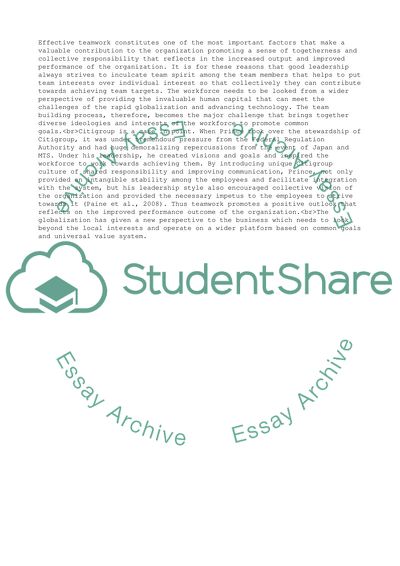Cite this document
(Teamwork And Positive Performance Outcome Case Study, n.d.)
Teamwork And Positive Performance Outcome Case Study. Retrieved from https://studentshare.org/management/1731074-the-research-challenges-the-view-that-identification-with-the-team-or-the-customer-is-always-positive-critically-evaluate-the-view-that-teamwork-is-always-positive-illustrate-your-arguments-with-examples-from-uk-us-organisations-and-contrast-this
Teamwork And Positive Performance Outcome Case Study. Retrieved from https://studentshare.org/management/1731074-the-research-challenges-the-view-that-identification-with-the-team-or-the-customer-is-always-positive-critically-evaluate-the-view-that-teamwork-is-always-positive-illustrate-your-arguments-with-examples-from-uk-us-organisations-and-contrast-this
(Teamwork And Positive Performance Outcome Case Study)
Teamwork And Positive Performance Outcome Case Study. https://studentshare.org/management/1731074-the-research-challenges-the-view-that-identification-with-the-team-or-the-customer-is-always-positive-critically-evaluate-the-view-that-teamwork-is-always-positive-illustrate-your-arguments-with-examples-from-uk-us-organisations-and-contrast-this.
Teamwork And Positive Performance Outcome Case Study. https://studentshare.org/management/1731074-the-research-challenges-the-view-that-identification-with-the-team-or-the-customer-is-always-positive-critically-evaluate-the-view-that-teamwork-is-always-positive-illustrate-your-arguments-with-examples-from-uk-us-organisations-and-contrast-this.
“Teamwork And Positive Performance Outcome Case Study”, n.d. https://studentshare.org/management/1731074-the-research-challenges-the-view-that-identification-with-the-team-or-the-customer-is-always-positive-critically-evaluate-the-view-that-teamwork-is-always-positive-illustrate-your-arguments-with-examples-from-uk-us-organisations-and-contrast-this.


